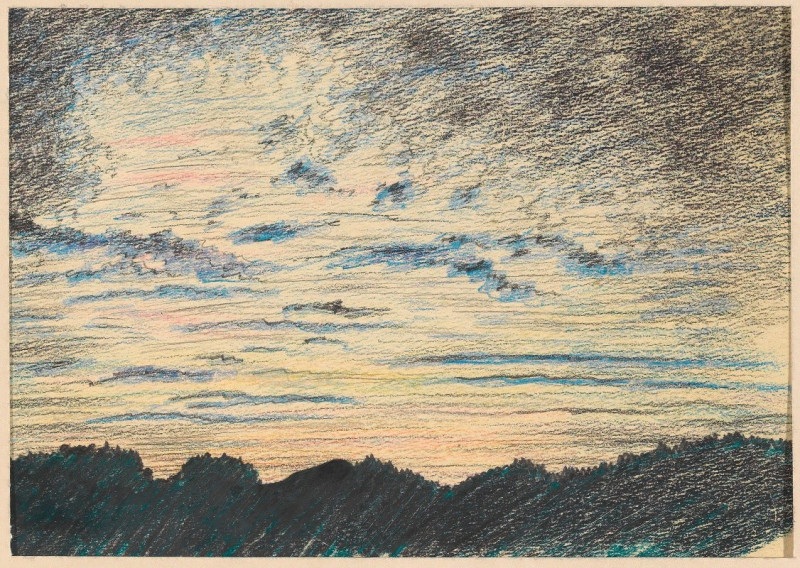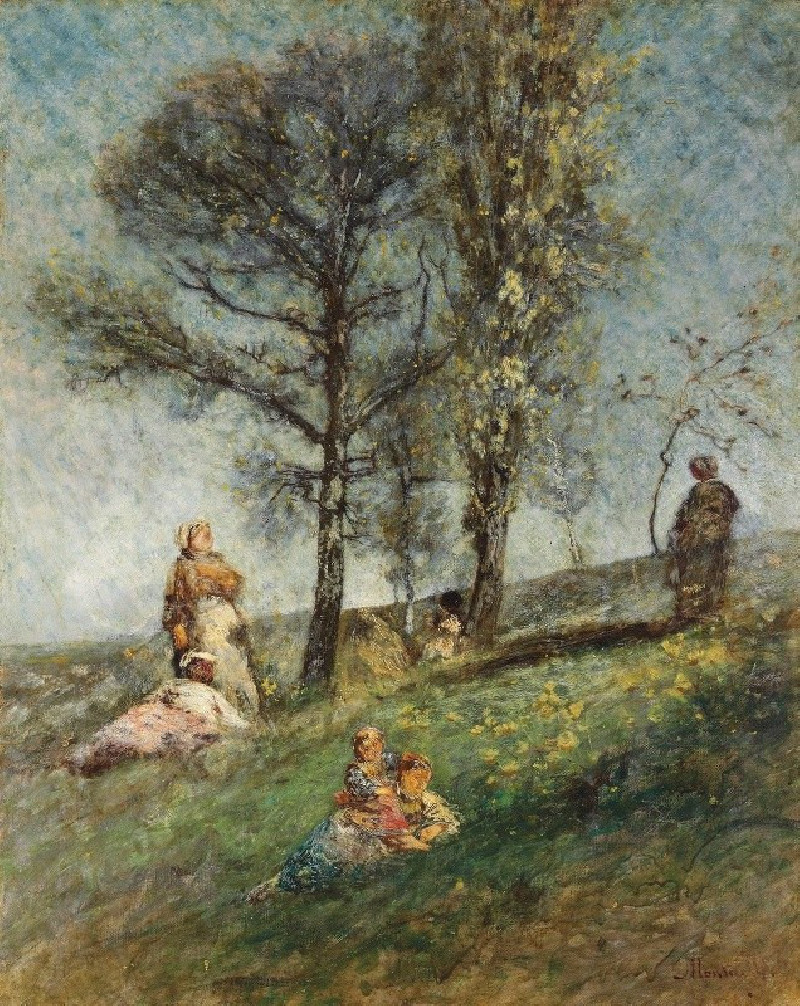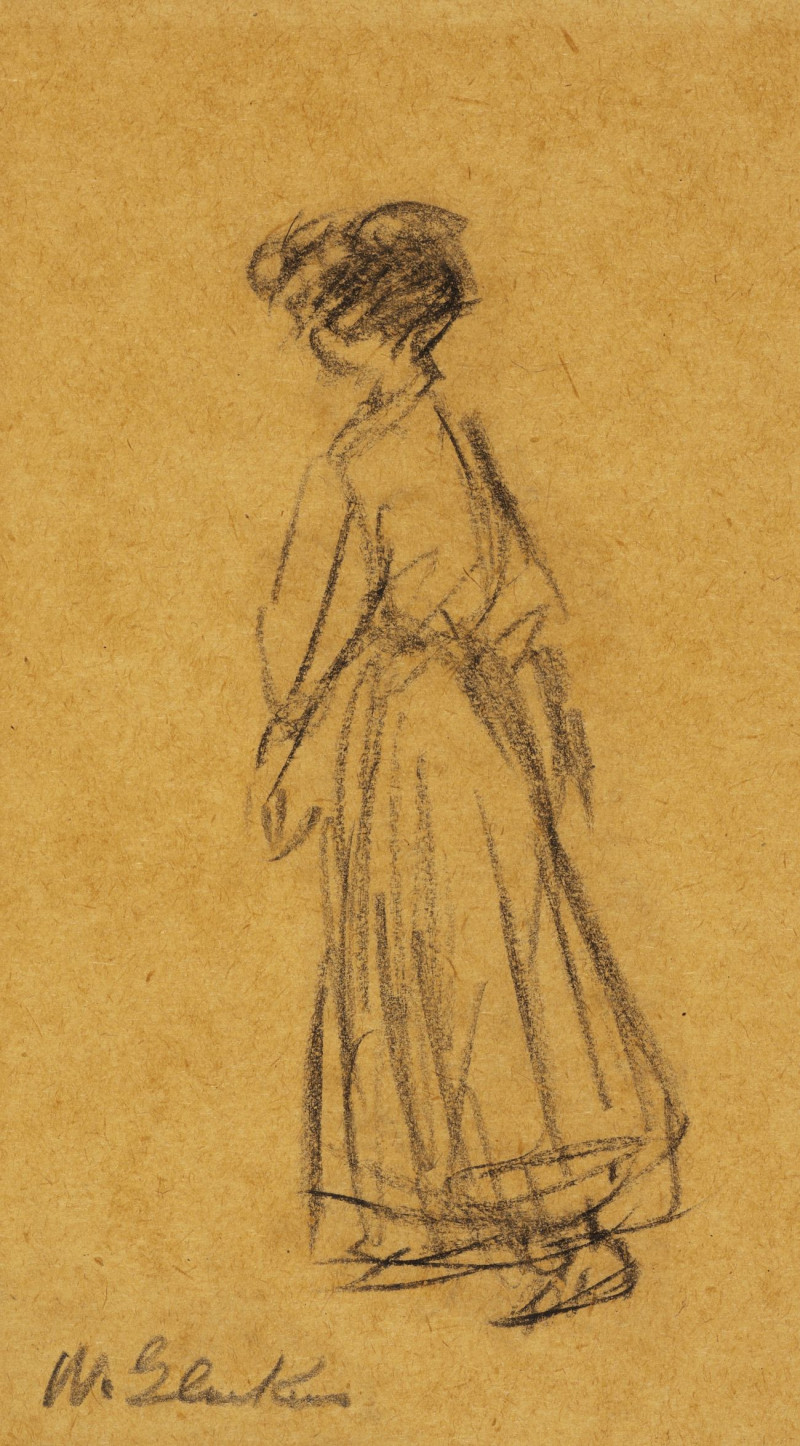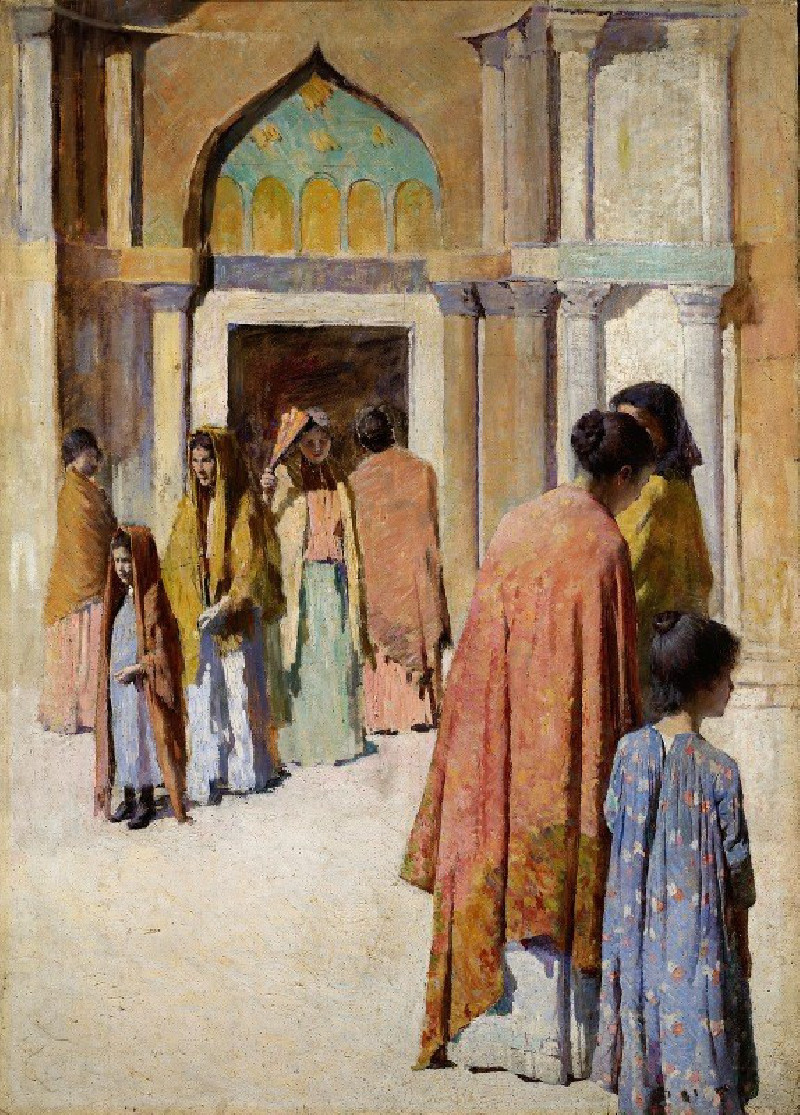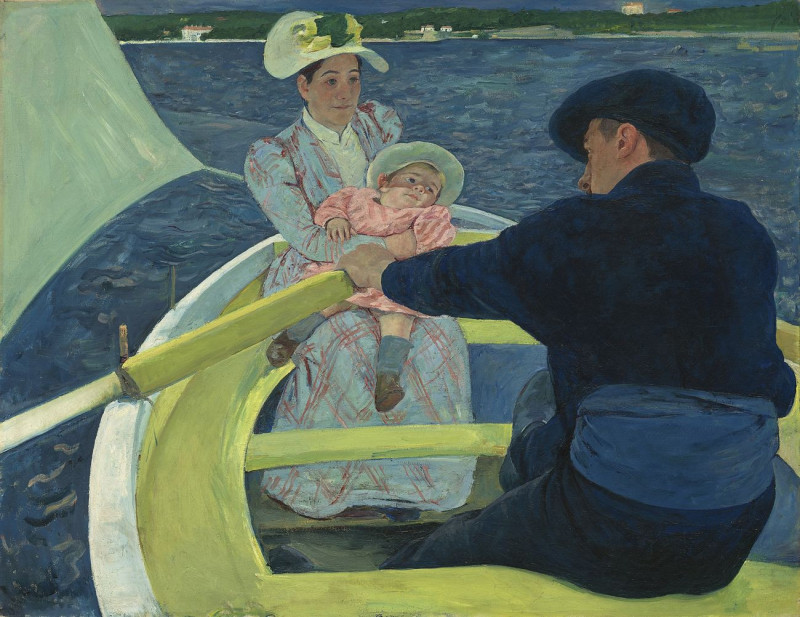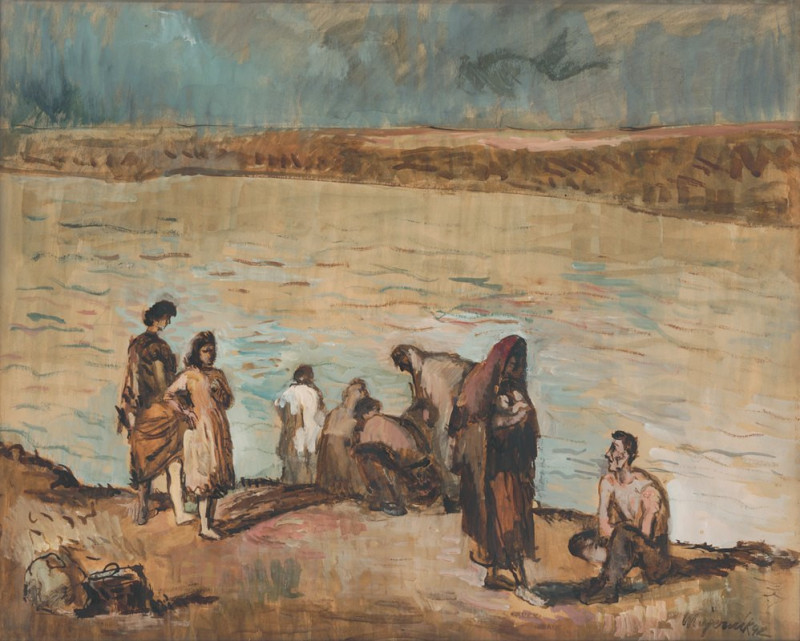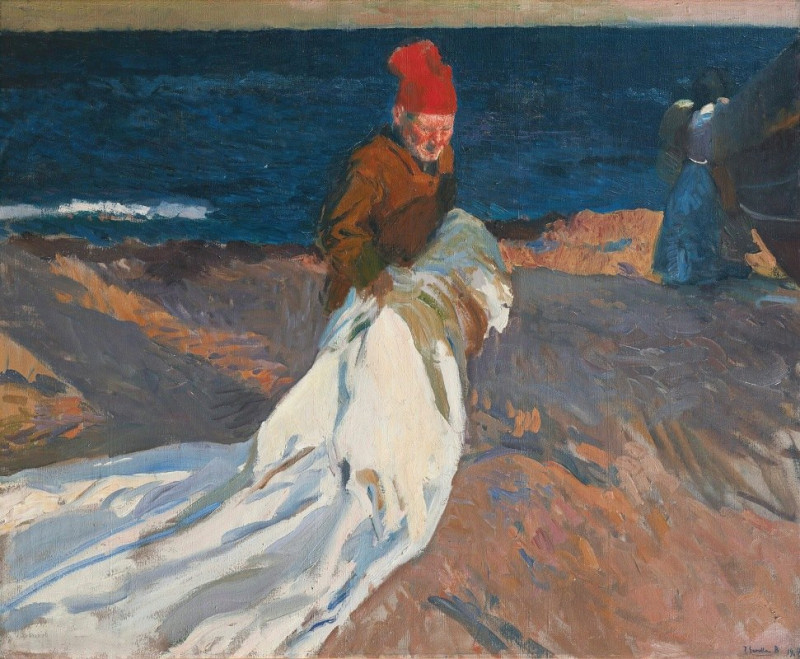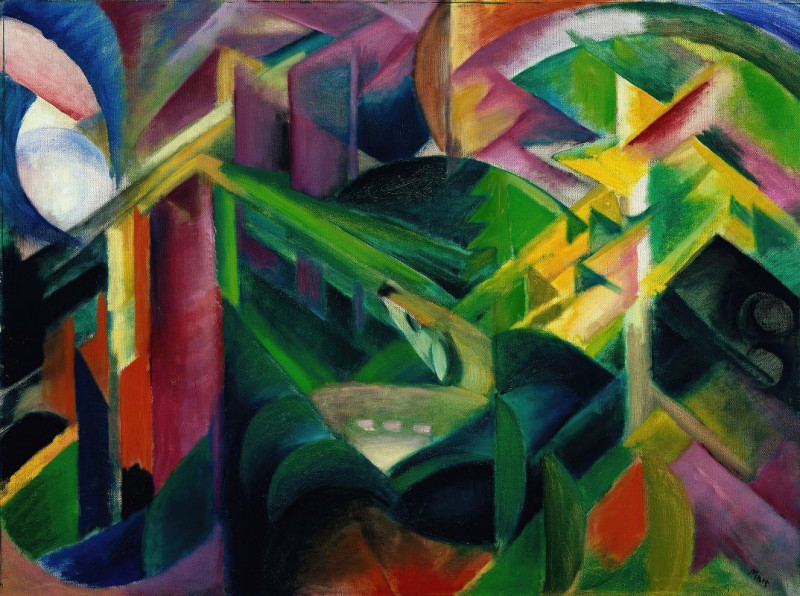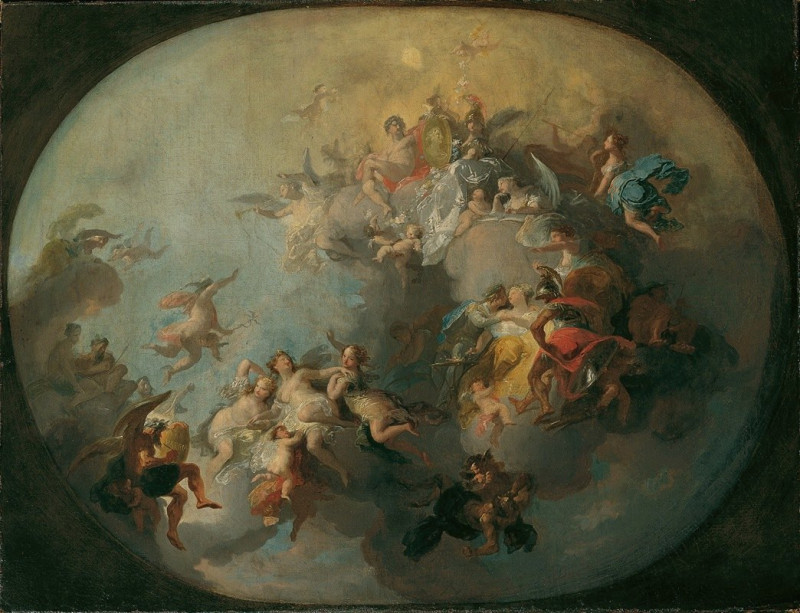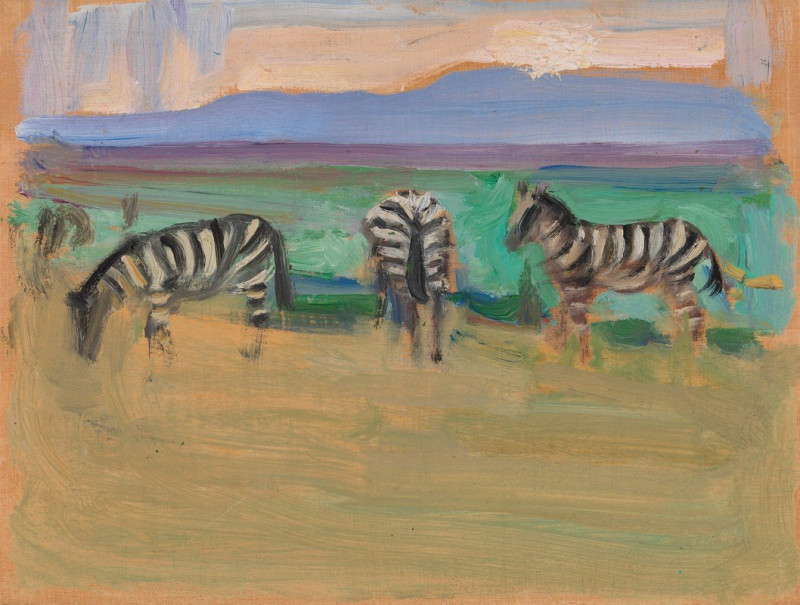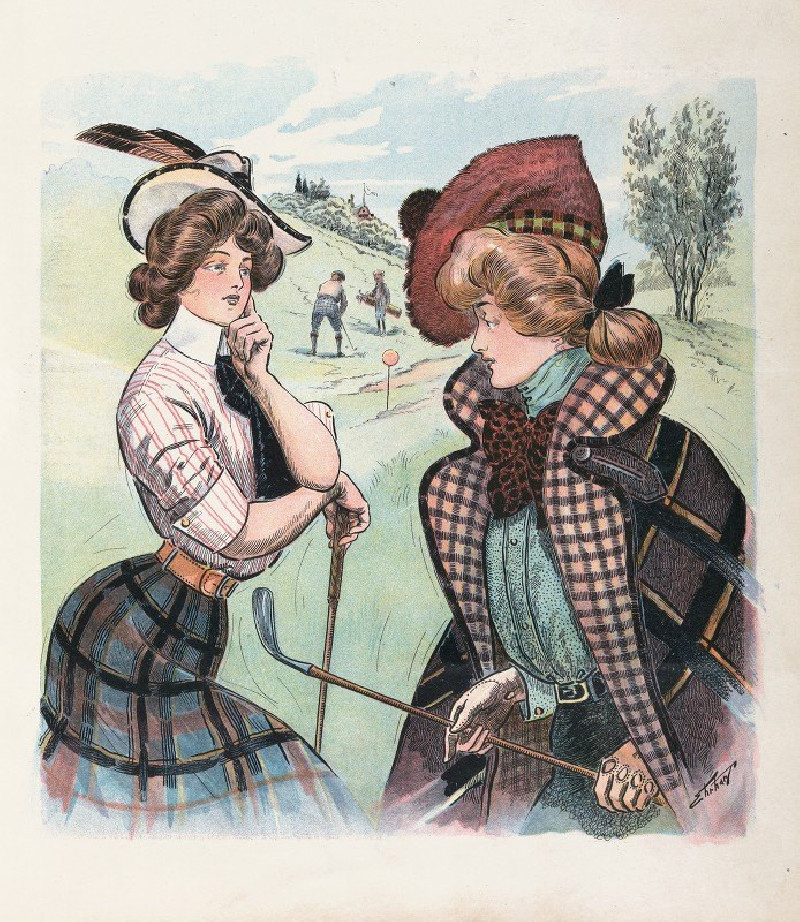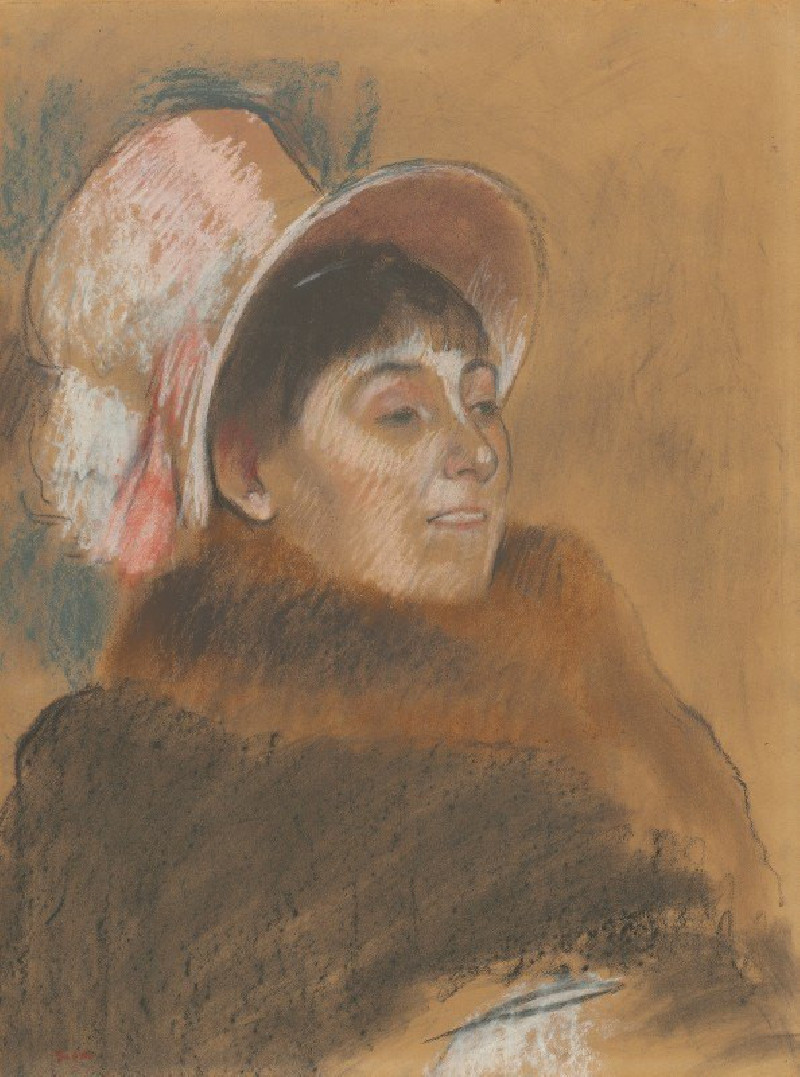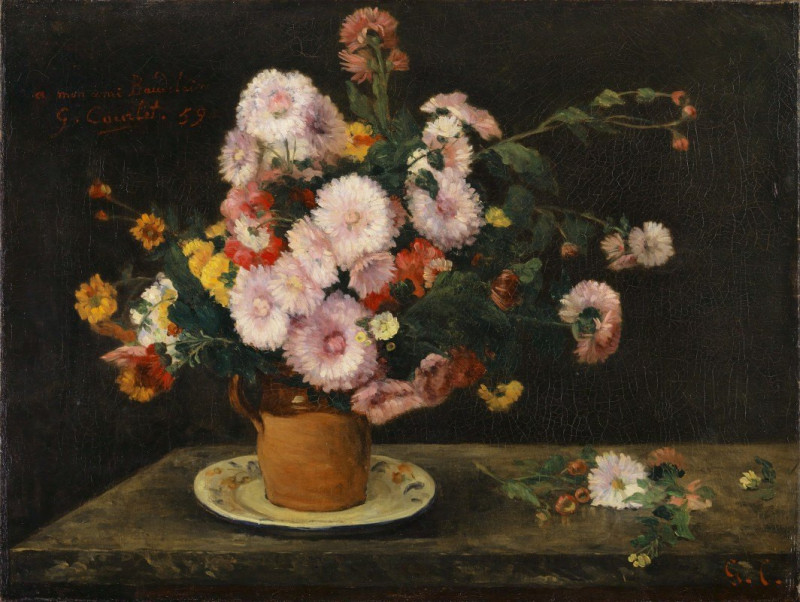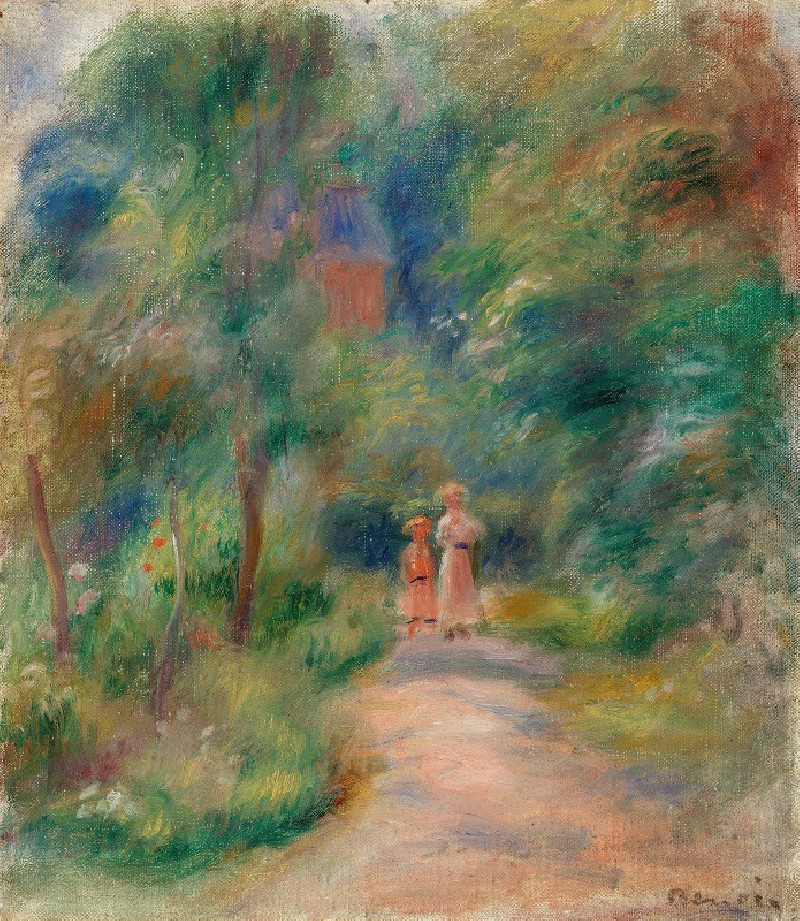Ohne Titel (Naturstudie) III (1924)
Technique: Giclée quality print
Recommended by our customers
More about this artwork
This compelling piece by Karl Wiener, entitled "Ohne Titel (Naturstudie) III" (Untitled Nature Study III), painted in 1924, portrays an exquisite scene centered around a dynamic and atmospheric skyscape. The artist’s delicate yet vibrant use of colors evokes the ephemeral aesthetics of a sunset, with soft yellows, pale blues, and gentle pinks spreading across the canvas, reflecting the transient light of dusk.In the foreground, dark silhouettes of tree-covered hills create a calm, grounding contrast to the moving skies. The forest line is a shadowy boundary anchoring the viewer’s gaze before it wanders into the vast expanse of the sky. Wiener’s technique, characterized by textured and layered strokes, adds a tactile depth to the scene, making the fleeting moment depicted in the artwork feel tangible.This work exemplifies Wiener's profound connection to nature and his skill in capturing its transient moods and moments. The painting invites viewers to pause and contemplate the serene beauty of the natural world, as well as the skill with which it has been rendered.

